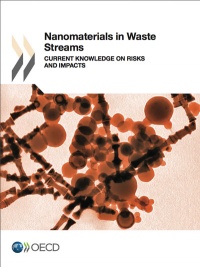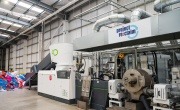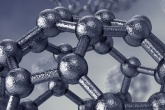Research into nanomaterial disposal ‘urgently needed’
Urgent research into the health and environmental risks associated with the disposal of engineered nanomaterials is needed, according to a new report published today (22 February).
‘Nanomaterials in Waste Streams: Current Knowledge on Risks and Impacts’ was produced by the environmental division of the Organisation for Economic Cooperation and Development (OECD), a body that promotes policies that improve economic and social wellbeing. The highlights the increasing amount of engineered nanomaterials (ENMs) present in waste streams and calls for the research into the associated risks.
The OECD claims a rising amount of ENMs are reaching sewage plant effluents, incinerator exhaust gases and fertiliser by being disposed of in household waste. The materials, the effects of which have not yet been thoroughly studied, get that far due to landfill sites, incinerators, and wastewater treatment facilities not being designed to filter out particles as small as a millionth of a millimetre in size.
The report is intended to be used as a basis for future research into ENMs. It provides a summary of current knowledge and associated gaps in that knowledge and suggests areas requiring further research and potential approaches for the capture of ENMs in waste streams.
Growing market

According to the OECD, the number of products containing engineered nanomaterials rose by 500 per cent from 2006 to 2011, with manufacturers using their wide range of ‘novel properties’ to improve the performance of more than 1,300 products from car tyres and tennis rackets to smartphone batteries and cosmetics. The global market for the materials was estimated to be worth around €20 billion (£15.6 billion) in 2012.
Existing research suggests that that nanomaterials, which the OECD says can penetrate skin and cells more easily than larger compounds, might carry health and environmental risks.
Some specific ENMs have shown evidence of cancer-causing properties in lungs or the ability to bypass the blood-brain barrier. Others may negatively affect the environment via their antibacterial properties or by increasing the bioavailablity of pollutants (increasing their uptake).
However, waste containing ENMs is disposed of along with conventional waste. The report says that while state-of-the-art waste treatment plants may collect a large share of nanomaterials from waste, less efficient processes used in much of the world mean a significant amount is likely released into the environment as exhaust gas from incineration, ash applied on roads, or treated wastewater, or it could leach into soil and water sediment.
The OECD issued a recommendation in September 2013 suggesting that regulations currently in place for other types of waste would be applicable to nanomaterial with some adjustments. It did not, however, believe that disposing of nanomaterials along with residual waste without any precautions was appropriate.
Nanomaterials in waste streams
The OECD report was produced by the Working Party on Resource Productivity (WPRPW), which contains members from Switzerland, Germany, Canada and France, and the Working Party on Manufactured Nanomaterials (WPMN), which has been investigating the impact of nanomaterials since 2006.
The report draws on four case studies looking at Canada, France, Germany and Switzerland, and highlights in particular the existence of nanomaterials in the dried and composted wastewater sludge that is often spread on farmland as fertiliser.
In France, it says, half the national wastewater sludge is used for agricultural fertilisation. Despite this, the potential transformation of ENMs in soil, their interactions with plants and bacteria and their transfer to surface water has never been studied in depth.
The report concludes that more research is needed to reduce the uncertainty in methods used to dispose of nanomaterials. Only a few nanomaterials have been studied, and many studies use modelling or lab experiments rather than testing actual treatment facilities.
It states that work must be done to identify types and quantities of ENMs entering waste treatment processes, the behaviour and fate of nanomaterials in waste treatment processes, the potential emissions of ENMs from residual waste and/or material recovery, and the effectiveness of best available waste treatment technologies in retaining/eliminating ENMs.
Urgent need for better understanding
OECD Environment Director Simon Upton said: “Nanomaterials are revolutionising everyday products, with benefits to society, but there are many unanswered questions about the risks some may pose to our health and the environment.
“We urgently need a better understanding of these risks so we can assess whether our waste treatment systems should be adapted to contain them.”
The full OECD ‘Nanomaterials in Waste Streams’ report can be read on the body’s website.





